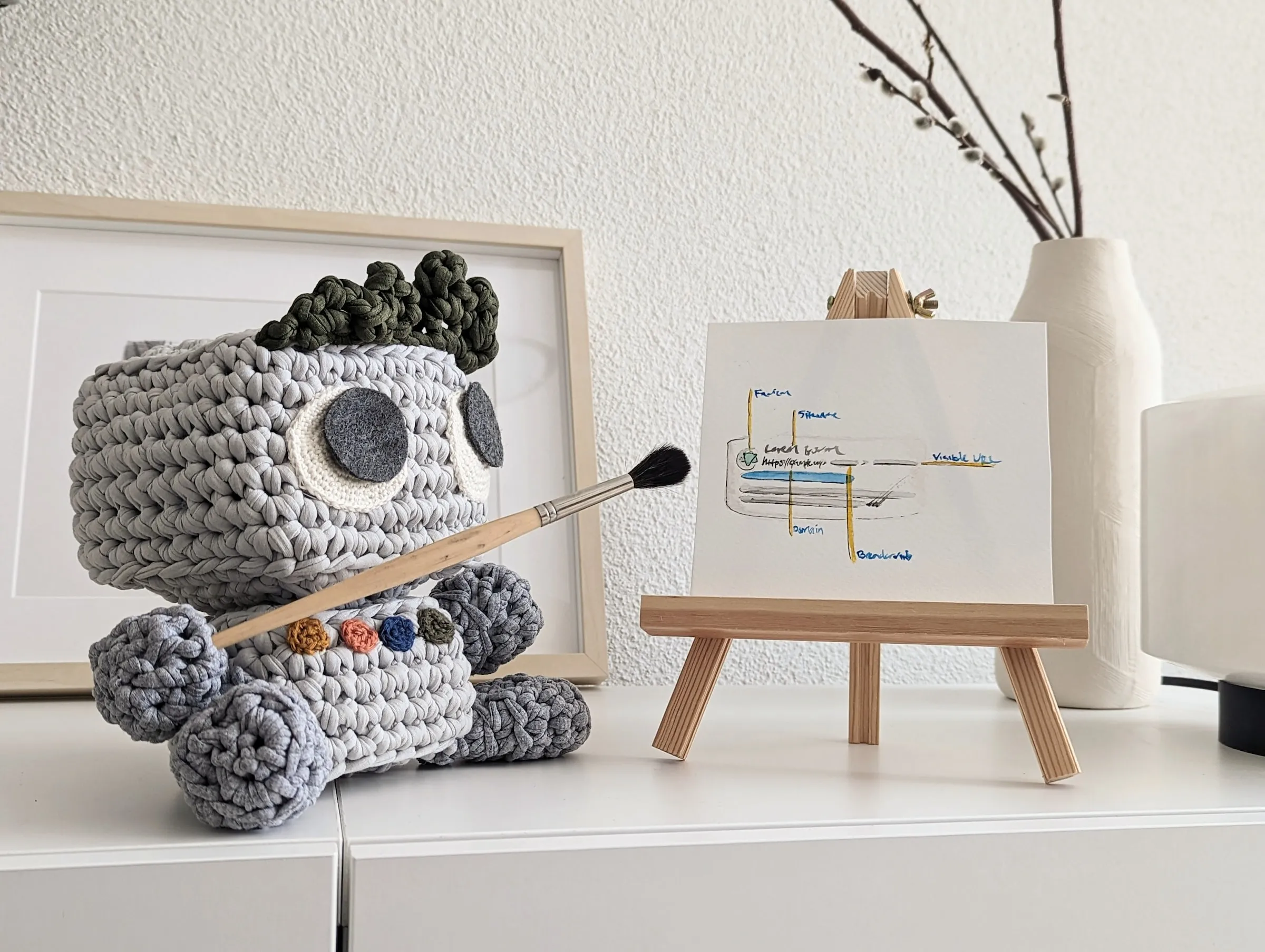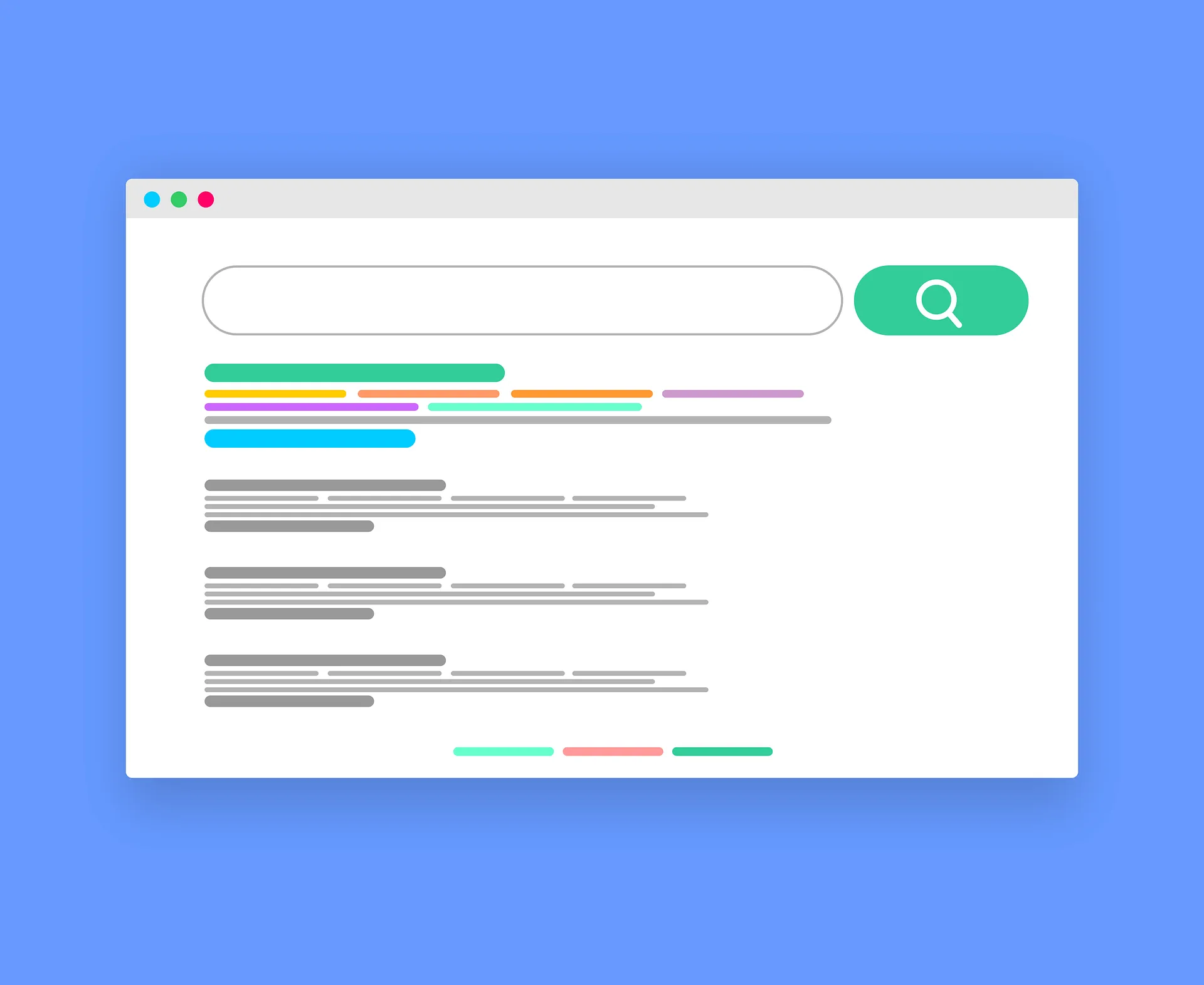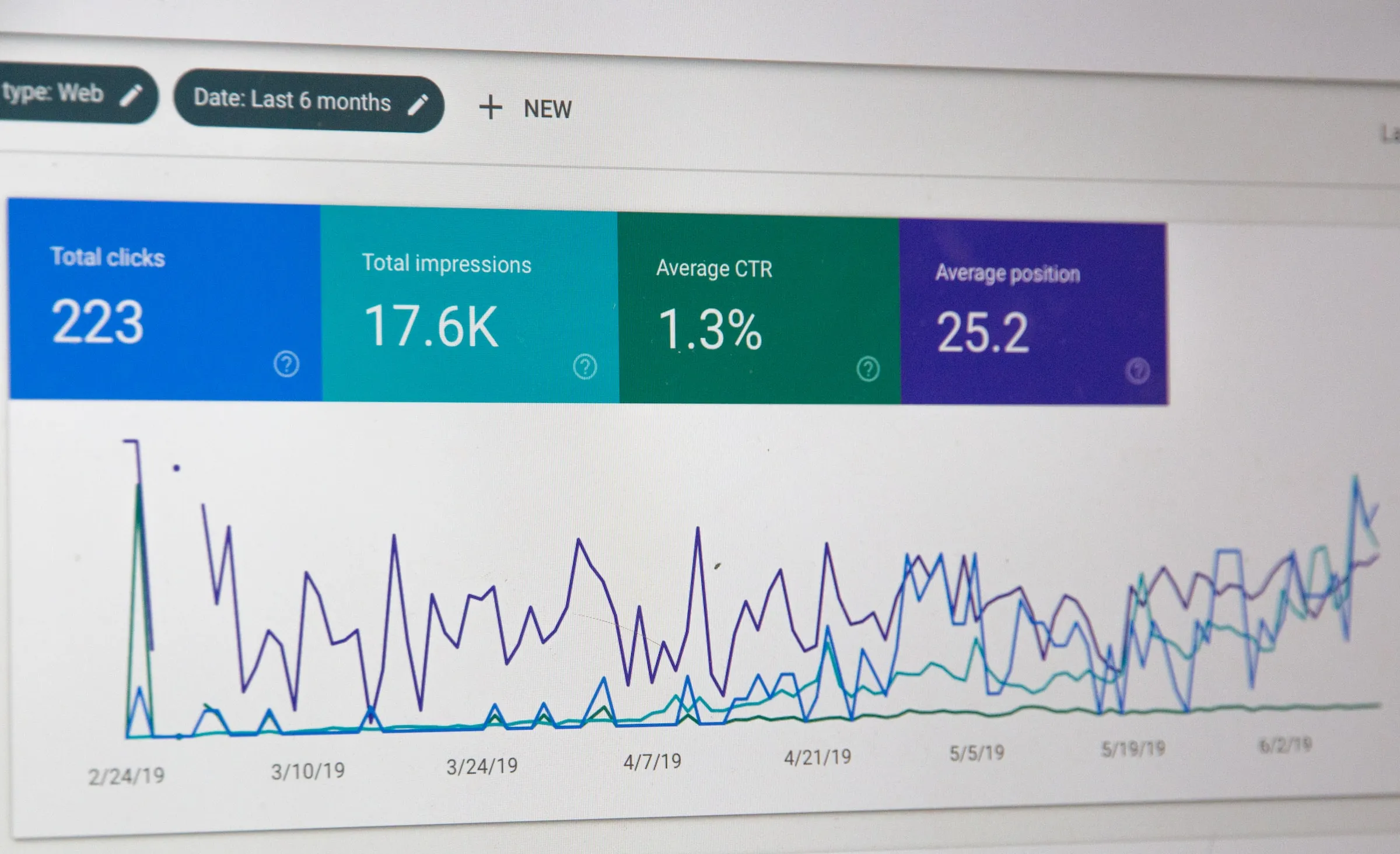How Does SEO Work: Everything You Wanted to Know


If you research organic marketing, you’ll often find the subject of how SEO works shrouded in mystery. At a high level, it’s actually much easier than it seems. Let’s take a look at the four main components of SEO.
How do search engines work?
Search engines might seem complex and hard to understand. The easy explanation is they are systems that discover, store, and rank content pages on the internet. Let’s take a look at the four steps of the search engine discovery and ranking process.
1. Search robots crawl your website.

If you want your website to show up on search engines, their robots need to crawl your website. This is a process where their robots visit the pages of your website. These crawls can take time, especially for a new website. Sometimes there are technical SEO issues which can prevent crawling of certain pages.
There are tools like Google Search Console and Bing Webmaster Tools, which help monitor these crawls and identify problems. Keep in mind, when you update content, search robots have to re-crawl it and discover your changes. This has to occur before changes or updates improve your website’s rankings.
2. Search engines index your webpages.

Once search engines discover your webpages, they need to decide which pages to include in their search index. They won’t always include every page. In some cases, they won’t include low quality or duplicate pages.
For example, a 404 error page. Also, for many content management systems, search results pages within your own website might not be included. That’s actually a good thing, as you don’t want search robots wasting their time on low value pages.
3. Search engines rank your webpages for keywords.

After search robots have crawled and indexed your site, the search engines have to figure out how to rank your webpages. They also have to figure out which keywords to rank you for. This also takes time. In some cases, you might see new rankings or ranking changes within days or weeks. In other cases, you might not see significant ranking changes for months.
The thing to understand with keyword rankings is, some search engines intentionally randomize the time it takes for you to see your true ranking improvements. Because of this, don’t expect quick ranking results, and don’t get discouraged. Keep doing the right thing with confidence. Continue improving the quality of pages and performance will come.
4. Users click on your site from search results.

As your webpages get crawled, indexed, and ranked, eventually users will start clicking on those search results. This usually starts happening once those rankings reach page 1-2 (#1-20) of the search results. One thing to keep in mind is the potential for low-hanging fruit to optimize. For example, when first beginning to optimize your site, it’s usually a good place to start with analyzing your current performance.
One example is to use tools like Google Analytics, Google Search Console, and SEMRush. With these tools you can identify what pages are indexed and what you already rank for.
You might discover opportunities, like pages with keyword rankings on page ~3-4. In some cases, with updates, typo fixes, internal linking improvements, and a few other optimizations, you might be able to improve those ranks to page 1-2 without starting from scratch.
How do search engines rank websites?
Search engines are computer systems that catalog webpages and files on the internet. They inevitably have to rank those search results. To do so, they’ll have to use some form of ranking factors to determine how to rank them.
Think of it like a video game. The goal is always to figure out how to build quality and relevant factors into your content so you “score” better than the competition. This game will go on forever as long as a search engine is involved.
Is SEO dead?
People sometimes say this as a joke. Others use it as a marketing technique to get your attention. The reality is, SEO will always exist. It might just change a bit over time. The ranking factors will change and evolve but, you can always find ways to take advantage of them.
We’d also recommend thinking beyond “manipulation” of these ranking factors. Ultimately, search engines usually look to provide the best results a user is searching for. As their algorithms evolve, these ranking factors help define what “best” means as well as what the most accurate and best quality search results are that users prefer.
Considering this, by taking advantage of many of these ranking factors, you are also creating a great user experience (UX) with your content! So, as SEO evolves, the relationship between it and good UX continues becoming closer to a 1:1 ratio.
Why care about how SEO works?
Organic traffic is a good source of inexpensive, long-term traffic. When you build for quality and relevance to what your users’ are searching for, search engines eventually reward this. Once that organic traffic builds, it will generally maintain for a long period of time. The investment in content you make today might continue delivering traffic and revenue for months, or in some cases, years!
Contrast this with paid search traffic. With paid search, it is an increasingly expensive game that can cost you hundreds or thousands of dollars per month. The second you pause a campaign or run out of budget, the traffic and revenue disappears immediately. Some companies live and die because they are so heavily leveraged on paid search at the expense of all other traffic channels. Organic search and SEO helps you diversify and protect your business.
Ordering and ranking results
Search results on most popular search engines fluctuate on a daily basis. All successful search engines are continually trying to improve quality and relevance of search results to better satisfy their users.
In addition to this, many search results include different components or experiences. For example, if you search an address on Google or Bing, you won’t just have a typical listing of 5-10 search results. You’ll also see a map widget, and possibly also a “knowledge graph” box on the right with details on the location.
When people think about SEO, they usually think about being number 1 for keywords. Keep in mind these different search experiences based on the search query. Sometimes the first item in the search results might be a Q&A or FAQ widget. It might also be a YouTube video, product listing widget, or map listing. Think beyond pure rank and try to imagine how you can show up in as many of the prominent elements for your search results.
Different ranking algorithms
With Google in particular, there are many publicly known ranking algorithms that factor into search results. These algorithms have been evolving over time. For example, Google’s RankBrain and Hummingbird algorithms.
While it can be useful learning a bit about how some of these algorithms work, beware. Algorithms are a rabbit hole that many SEO professionals fall into, get entirely lost, and waste their lives attempting to understand and exploit.
At the end of the day, strongly consider the fact that companies like Google employ tens of thousands of engineers! Trying to analyze, understand, and learn how to exploit these algorithms is a fool’s errand. It used to be much easier to achieve maybe a decade ago. Nowadays, everything changes and improves too quickly. You as an individual or small business do not have the time, resources, or technical expertise to achieve algorithm exploits to any consistent degree.
This might sound negative but, it’s actually a message of hope! These search algorithms continue to improve. They continue to try and better quantify what quality and relevance mean to users. It’s much better to approach SEO these days from the standpoint of trying to understand quality and relevance factors. Then just try to build as many of those factors into your site and content as possible. Also, keep improving them over time. This is a much more comfortable and rewarding approach as opposed to attempting to outsmart tens of thousands of engineers.
How long does SEO take to work?
No one knows for sure how long SEO results can take. That said, there is a lot of anecdotal evidence in the industry that can give us a rough idea. Ultimately, we strongly recommend not getting caught up in the fine detail and attempting to predict when you can expect results. It’s much better to approach rankings and organic traffic with a long term view.
In some cases, you can see initial results and ranking changes within just a few days. In most cases, the ultimate rankings and rank improvements you might achieve will usually take weeks or months. We like to monitor rankings based on what we call ranking waypoints. These ranking zones are rough indicators to help us have confidence results are moving the right direction.
Waypoint 1, 30 Days
Early warning indicator. During this period you want to identify any technical issues creating problems for crawling and indexing. Sometimes new websites can benefit from submitting your new pages within Google Search Console and Bing Webmaster Tools to get them in the crawl queue.
Waypoint 2, First 90 Days
Initial performance indicator. Rankings may be volatile within the first 90 days, fluctuating up and down regularly. Regardless, ignore the noise in any fluctuations and try to identify a trend. Are your rankings generally improving? Are you seeing more keywords entering into the top 100 results? These can be positive indicators.
Waypoint 3, First 180 Days
Long-term performance indicator. Most keywords with any significant competition will take a long time to achieve their true ranks. Short term wins that happen within days or weeks are NOT what you should be looking at to determine success. If you look at 6 months of ranking results, this will ensure you can filter out the noise and determine true ranking performance.
Waypoint 4, 360 Days
Mission success. For extremely high value and high competition keywords, it may be necessary to look at performance on a much longer timeline like this. For example, a short tail keyword like “content writing” is highly sought after. Writing one article and ranking within 30 days is not a thing. Going after a keyword like that will take concentrated effort, continual optimization, content updates, etc. to compete.
To summarize, rankings fluctuate EVERY day, and often multiple times per day. Do not get caught up in using these frequent changes to change your overall strategy on a daily basis. This will drive you crazy! Instead, take note of the ranking zones and treat them appropriately. Look for early warnings of technical issues to fix. Beyond that, simply look for indicators that performance is trending the right direction, even if the occasional fluctuation doesn’t look great.
To maintain your sanity, ultimately you want to learn what factors help create quality and relevant content. Then just keep doing the right thing, building those factors into your content, and trusting the ranking process to sort itself out. You can worry about getting more strategic and tactical with your efforts when you start reaching the top 3 or top 5 for some of your highest value keywords. Until then, relax, grow your knowledge, and trust the process!
Keyword research for SEO
It’s important to be precise with the words you use to describe your products and services. If you’re not using the terms people are searching for, sometimes you won’t rank for those keywords.
Keyword research is a process of using various tools to determine the most popular words people are using to describe the products and services you offer. Companies such as Google, BigInt, and others often provide data about this keyword search activity. You can use this data to identify popular keywords, seasonal keyword search activity, and a number of other useful metrics that can help you prioritize the content you create.
Ultimately, your content structure and the words you use are critical touchpoints to help users find what they need when they need it.
Learn more about how keyword research works.